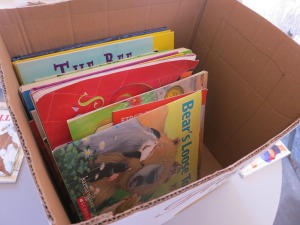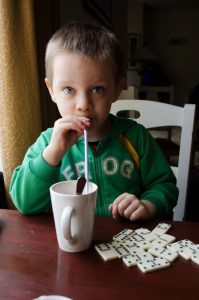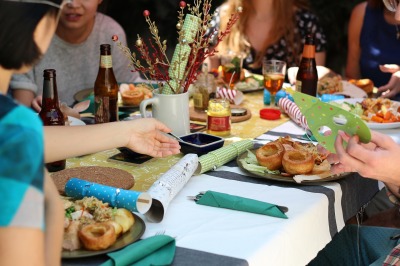Peekaboo is not only a game which babies, starting at about 5 months of age, universally love to play, it also supports their cognitive and emotional growth. Here are some of the reasons why.
- Peekaboo facilitates and enhances bonding. Face to face gazing, smiling and vocalizing are central to early bonding in adult child relationships. Sharing emotional states, feeling and expressing pleasure and excitement with your baby, is an important way of building a strong bond.
- From birth until around 18 months, children are mastering the concept of object permanence, the understanding that a thing or a person continues to exist even when it cannot be seen. The repeated disappearances and reappearances of peekaboo lay a foundation for the mastery of longer separations.
- Babies are very curious and love discovering new things. Variety in the way you play peekaboo exposes them to novelty and surprise within a familiar and safe context. This helps with emotional regulation and flexibility.
- Peekaboo introduces the idea of turn taking. When your child takes a turn being the one to hide, he is practicing turn taking as well as experiencing the excitement of the game from another perspective.
Here are some guidelines for playing peekaboo with your baby and toddler:
- Start a gentle game of peekaboo by hiding your face behind your hands or a cloth for a second or two when your baby is about 5 months old, or as soon as she starts to react pleasurably to this activity. You can also place the cloth over your child’s face for a couple of seconds so that she starts to experience the other side of the game.
- Vary the duration and rhythm of the game, paying close attention to your child’s reactions. You want to see him looking surprised and then excitedly happy.
- Vary your voice and facial expressions to maintain the element of surprise.
- Make up your own versions of the game as your child grows older, for example, hiding your whole body behind a curtain or door.
- If your child invents his own versions of the game, follow his lead and play along. Your child wants to see you look surprised and excited by what he is doing to you!
- Always pay attention to the optimal level of stimulation for your individual child. If you have a baby who is gaze avoidant, make your expressions smaller and softer and keep the meeting of gazes at reappearance brief and always with a smile. Be sensitive to your baby’s cues. Fleeting eye contact may be all that your baby can tolerate at this stage. Try and remember that a child’s capacity for tolerating eye contact does not reflect on how much he or she loves you!
You can find more tips on parenting and your child’s development by visiting UWS Parenting Support’s website (uwsparentingsupport.com).












